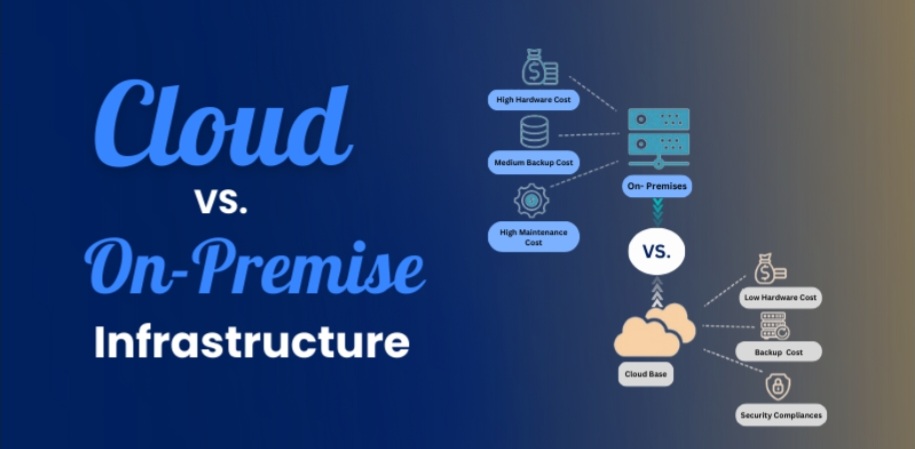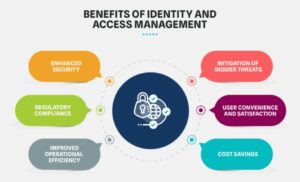
The 50/50 On-Premises vs. Cloud Approach: Balancing Flexibility and Control in Today’s IT Landscape
“Being on the front lines gives me a bird’s eye view of the business world—every call is a heartbeat of what’s really happening in the market.” Tony Crilly 💡
In 2024, there has been a growing shift toward hybrid IT environments, with businesses increasingly opting for a 50/50 split between on-premises and cloud infrastructure. This trend reflects a balanced approach to IT that aims to capture the advantages of both environments while addressing the limitations of going all-in on either cloud or on-premises solutions.
The Symphony of the Cloud: How AI and Cloud Computing Are Transforming the Digital Landscape
Cost Considerations: The Long-Term View
Cloud services have often been touted as a way to reduce capital expenditures (CAPEX), particularly for startups and businesses with unpredictable data demands. The pay-as-you-go model offers flexibility, but as companies grow, the operational costs (OPEX) of running cloud-exclusive operations can quickly balloon. Basecamp, for instance, reported spending $3.2 million annually on AWS, leading them to shift toward on-premises servers to cut costs by $1 million annually . Similar sentiments were echoed by leaders at the 2023 Gartner IT Symposium, where CIOs cited growing OPEX in cloud environments as a top concern .
Hybrid infrastructure helps mitigate these escalating costs by allowing businesses to keep predictable, high-traffic applications on-premises while utilizing the cloud for variable, less predictable workloads . HashiCorp’s 2023 State of Cloud Strategy report found that 94% of companies incurred avoidable cloud expenses due to over-provisioning and idle resources . By shifting to a hybrid approach, businesses can right-size their infrastructure investments and only pay for cloud resources when necessary .
Security and Compliance: Protecting Critical Data
Security remains a critical issue for businesses relying on public cloud platforms. A 2023 report by IBM revealed that 25% of organizations faced significant security concerns while using cloud services . These concerns were highlighted further at the RSA Conference 2023, where top cybersecurity executives warned of the risks of data breaches and regulatory non-compliance in the cloud . When cloud services like AWS experienced major outages in 2023, compromising the data of hundreds of thousands of businesses, the dangers of relying solely on cloud infrastructure were laid bare .
To address these risks, a 50/50 hybrid approach allows businesses to store their most sensitive data on secure, on-premises servers, which can offer greater control and easier compliance with regulations such as HIPAA and GDPR . A hybrid model also ensures that critical operations are not solely dependent on third-party cloud providers, mitigating the risk of cyber-attacks or outages.
Reliability and Performance: Minimizing Downtime
Downtime can be a significant cost for businesses, particularly those running customer-facing applications. A five-minute cloud outage, like those experienced by AWS, Oracle, and Azure in 2023, can lead to lost revenue and damaged customer trust . At the AWS re:Invent 2023 conference, IT leaders emphasized the importance of redundancy and backup strategies to avoid costly downtime . Hybrid environments offer this redundancy by spreading workloads across both cloud and on-premises infrastructure, ensuring that if one system fails, the other can quickly take over .
For instance, businesses leveraging on-premises infrastructure can keep mission-critical systems operational even during cloud outages, which is especially important for industries such as finance and healthcare . As highlighted by Oracle’s CTO Larry Ellison, hybrid strategies allow companies to “failover seamlessly” between systems, ensuring minimal disruption to business operations .
Storage Flexibility: Scaling with Demand
Data storage needs often grow as companies scale. While cloud storage is attractive for its scalability, the costs can quickly escalate over time. AWS S3 charges around $0.02 per GB per month, which may seem minimal initially but can add up to millions for companies with vast data requirements . At the 2023 Cloud Expo Europe, industry analysts discussed the value of investing in on-premises hardware for businesses with predictable storage needs, as purchasing a physical server once often proves more cost-effective in the long run .
Hybrid models offer the flexibility to scale cloud resources during peak demand periods while keeping core, stable data on-premises, where it can be managed more cost-effectively .
Addressing Legacy Systems: Ensuring Compatibility
One of the biggest challenges for large enterprises migrating to the cloud is dealing with legacy systems that may not be fully compatible with modern cloud platforms. According to Microsoft CEO Satya Nadella, enterprises are increasingly opting for hybrid approaches because “cloud-first is not always practical” for systems that have been in place for decades . Migrating these systems piecemeal to the cloud can be expensive and time-consuming, often requiring line-by-line adjustments to databases .
In contrast, hybrid models allow businesses to maintain these legacy systems on-premises while integrating newer, cloud-native applications, offering a smoother transition and avoiding the pitfalls of full cloud migration .
Conclusion: The Case for Hybrid IT
As businesses grow and technology evolves, the 50/50 hybrid approach to IT infrastructure offers a compelling solution that combines the best of both worlds. By keeping some systems on-premises and leveraging the cloud for others, companies can reduce costs, improve security, ensure greater reliability, and scale efficiently.
At the 2023 Gartner Digital Conference, CIOs from across industries agreed that the future of IT lies in hybrid environments, which provide the flexibility and control businesses need in an increasingly unpredictable digital landscape .
References:
1. Basecamp (37Signals), 2023 report on AWS costs.
2. Gartner IT Symposium, 2023.
3. Gartner IT Symposium, 2023 CIO survey on cloud cost concerns.
4. HashiCorp, State of Cloud Strategy report, 2023.
5. Gartner IT Symposium, 2023 discussion on hybrid cloud cost efficiency. (gartner) (catchpoint)
6. HashiCorp, State of Cloud Strategy report, 2023.
7. IBM, State of Cloud Transformation Report, 2023. (IBM)
8. RSA Conference, 2023 cybersecurity trends.
9. AWS, Oracle, Azure, 2023 outage reports.
10. HIPAA and GDPR compliance discussions at Cloud Security Alliance, 2023.
11. AWS re:Invent 2023, discussions on cloud downtime.
12. RSA Conference, 2023 cybersecurity insights.(teksystems) (coresight) (rsaconference)
13. Oracle CTO Larry Ellison’s 2023 keynote on hybrid infrastructure. (Oracle CloudWorld 2023 Highlights) (ZDNet Overview of Keynote Insights)
14. Oracle, AWS, 2023 case studies on hybrid failover strategies. (amazon)
15. AWS S3, 2023 cost estimates.
16. Cloud Expo Europe, 2023 discussions on hybrid storage strategies.
17. Gartner Digital Conference, 2023, hybrid cloud scalability discussions.
18. Microsoft CEO Satya Nadella at Microsoft Ignite 2023.
19. Microsoft Ignite 2023, discussions on cloud migration challenges. (global-sharepoint) (agreeya)
20. Cloud Expo Europe, 2023, hybrid cloud for legacy systems.
21. Gartner Digital Conference, 2023, CIO panel on hybrid IT trends.
Linkedin article: (here)
The 50/50 IT Strategy: Why Leading Enterprises Are Moving to a Balanced Cloud and On-Premises Approach 💡
As companies like @Basecamp (37Signals) reassess their cloud strategies, the trend is clear: a 50/50 hybrid approach is becoming the new norm. According to the 2023 report from Basecamp, they shifted away from relying solely on AWS due to cost management concerns.
@Gartner, during their 2023 IT Symposium, noted that 75% of CIOs are now (Gartner IT Symposium/Xpo 2024!) focusing on hybrid cloud solutions to enhance security and cost-efficiency. “CIOs are rethinking their IT strategies to balance flexibility with control,” Gartner reported.
@HashiCorp‘s 2023 State of Cloud Strategy report echoes this, stating that 90% of enterprises are now adopting multi-cloud or hybrid models to ensure better data governance. “It’s about reducing complexity while improving compliance,” HashiCorp emphasized.






